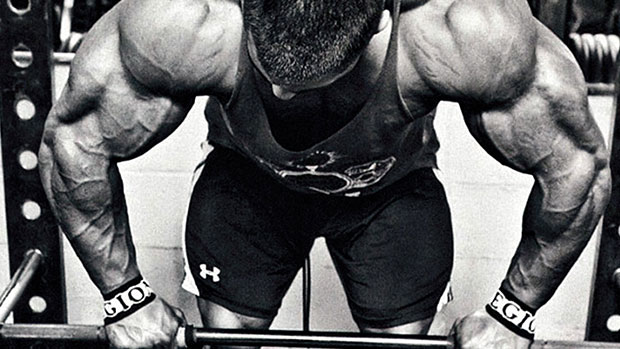If you're into calisthenics, at some point you'll want to introduce yourself to levers. The back lever is one of the easier variations to start with.
It's not only a cool trick, but also a tremendous exercise to develop your isometric core strength. Learning how to isometrically brace your core and have all your muscles work together to achieve full-body tension will transfer to all of your main lifts.
Whether you're wanting to use this as a supplement to your big lifts, or you just want a fun trick to add to your arsenal of exercises, use these steps to nail the back lever.
The back lever takes a considerable amount of shoulder strength and mobility. Before you start thinking about doing it, you'll want to be able to skin the cat.
This movement gets you used to going upside down, teaches you how to use your core, and preps your shoulders for the more advanced static holds.
When you first try it, make sure to set up the rings so that your legs can touch the ground when you go through them. This will allow you to take pressure off your shoulders or stop the movement if needed.

Getting used to all the blood rushing to your head is another prerequisite before going for your holds. Holding yourself upside down with your legs straight and core braced will help you understand the initial positioning of the back lever and will build up your confidence.
When it comes to levers, the longer you make your body, the harder the movement will become. Tucking your legs in will shorten your lever and give you more of a mechanical advantage. Make sure you can hold your tucked lever position at a dead stop for 3 to 5 seconds before moving to the next stage.
This movement is very similar to the tucked back lever, except it involves a little more extension at the hips, which increases the level of difficulty. Again, be able to hold your this position at a dead stop for 3 to 5 seconds before attempting to extend the knees.
The next step is to move to a straddle stance. This gets you used to extending the hips and knees, and will get you stronger to progressively hold more of your bodyweight in a lengthened position.
The beauty of the straddle-stance back lever is that you can make it more or less difficult by moving your legs further apart or closer together. Make sure you can hold your straddle position for 3 to 5 seconds before moving to the full version.
When you're first learning this movement it will be difficult to tell when you're parallel to the ground. Have a friend nearby to let you know or just video yourself. A friend can also help spot you, making the exercise considerably safer.
Now, if you're a gymnastics purist, you might say that a true back lever involves the palms facing the ground (supinated) when in the full lever.
Although this is technically correct, it puts considerably more stress on the elbow and you can risk a biceps rupture. If you don't have any formal gymnastics training, you're going to want your palms facing the ceiling (pronated) to save yourself from an unnecessary injury.




